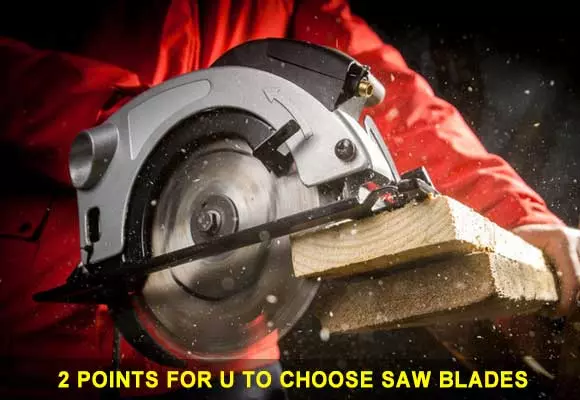
Two Things You Should Consider When Selecting A Circular Saw Blade
To choose the right circular saw blades for your tools and your wood, the brand is not the only thing we can think of. In fact, random blades sent to you with your new tools may give you a better cutting experience than some so-called high-quality cutting blades. Even though they have the same outside, saw blades are designed for specific tools and applications. Saw knife has different functions on different equipment, and applications will be different. So, we have two important points to choosing circular saw blades.

1. Diameter
Diameter is really important because, for each mechanical device and hand-held power tool, there’s only a certain size can be loaded on this device. For table saws, blades with 254mm diameters are usually accepted. For hand circular saws, it is usually 165mm or 190mm; For miter saws and rocker saws, it is usually 254mm or 304mm, for sliding table saws, blades with 315mm or 350mm or larger in diameter are acceptable. These tools can also use a smaller one, but if you set diameter ranges, do not attempt to use a larger blade. It may be difficult to find replacement blades of this size. So before buying a new blade, you should be sure saw knives suit your machine. Think it twice.

2. Kerf
What is kerf? A kerf is a slot on wood after a saw goes through. It can also refer to the thickness of the groove that the circular saw blade goes through. Besides, it can be used to define the thickness of the blade tooth itself, or at least the widest point on blades. Kerf thickness will affect cutting width, cost, power consumption, and amount of material(wood) lost during processing. The cut is usually wider than the blade matrix. If you look at the structure of a carbide-tipped circular saw blade, you will see that there are small carbide tips welded on saw knives and which make the cutting edge thicker than the blade itself. For high-speed steel saw knives, although its kerf is still thicker than the saw blade itself, cutting edge and saw knives are one. Why kerf thickness is wider than matrix? This is because there is an “offset” between tooth and blade. That means they are slightly bent to one side, alternating from one tooth to the next during cutting. Another thing that can affect a saw’s kerf is the flatness of the blade matrix. If the matrix warps slightly, teeth won’t follow each other in exactly the same straight line, but instead, they will wobble back and forth. This swing actually causes the blade to cut a wider tooth than required.
Sheet metal is usually produced in a forging plant. First, it is rolled in a forging plant, then unrolled and cut into sheets. So, before coming out of the factory as a piece of sheet, it may not be completely flat. So it is difficult for people to directly see the bending amount of saw blades. But this deviation may still produce a groove that is wider than the thickness of the blade and tooth. Some high-grade saw knives are made of non-rolled steel. This kind of steel is much more expensive than ordinary steel plates, and its processing technology is more complicated. But saw knives made up of this kind of teeth will not swing during cutting. What’s more, this kind of cutting blade will make the cutting surface cleaner and smoother than those knives made up of normal steel.

The thicker the blade is, the less likely it is to bend, and the kerf will be wider. For this reason, heavy-duty stationary table saws typically use a 3.2mm blade. Due to the power which the blade provided, this kind of blade can easily cut hardwood with high density. Table saws, miter saws, and rocker saws with rated power below 1.1KW usually are provided with a thin saw blade (about 2.4mm) for better performance power. Portable circular saws, especially lithium-ion hand-held saws, use even thinner blades. It is hard to find a 3.2mm saw blade for a portable saw. These ultra-thin blades exert less stress on sawing machines and do not bend appreciably due to their smaller diameter.
So next time when choosing saw blades, do not just think of the brand. Think more about your machine and choose a blade that matches your saw machine.